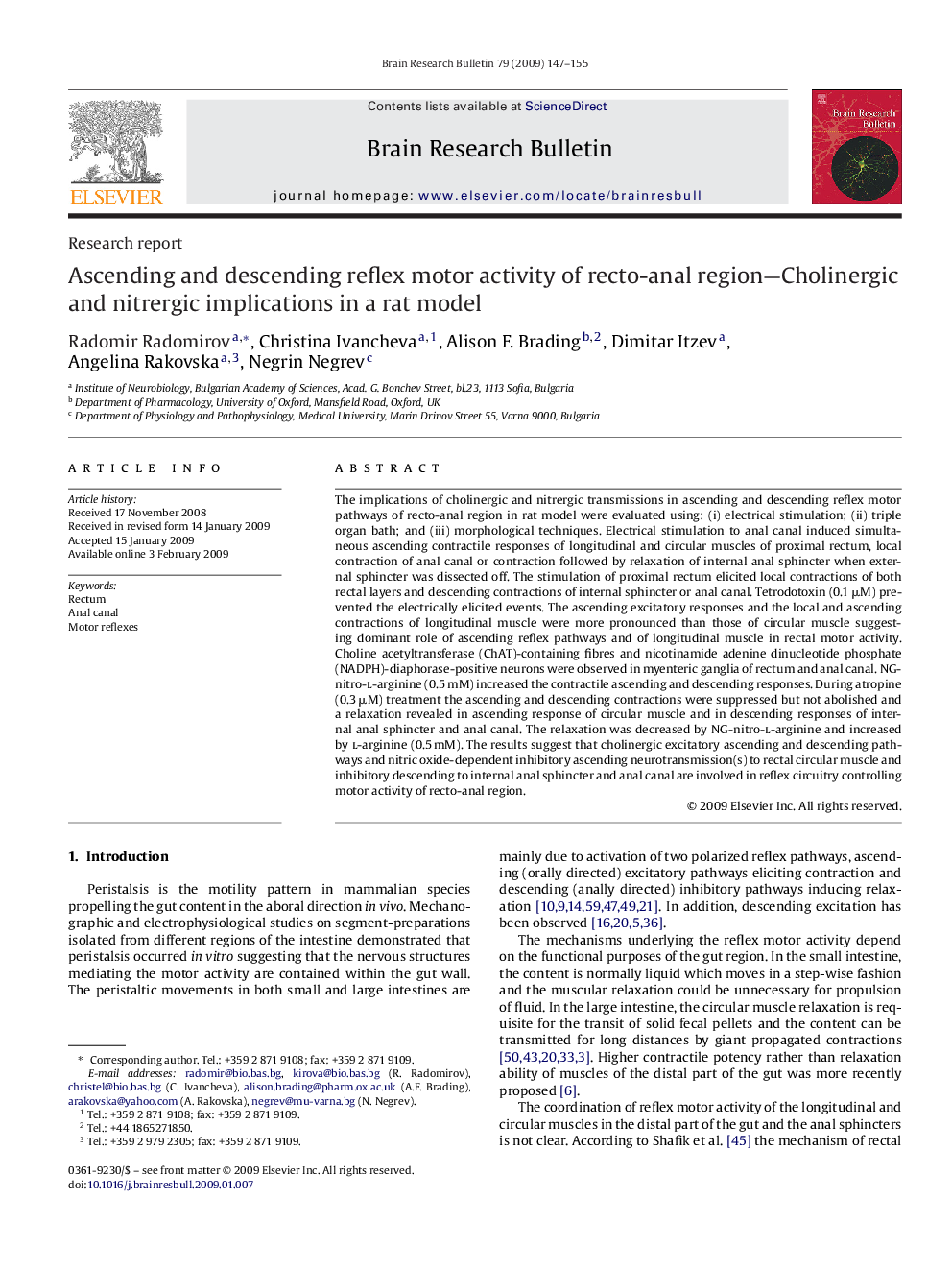| Article ID | Journal | Published Year | Pages | File Type |
|---|---|---|---|---|
| 4319533 | Brain Research Bulletin | 2009 | 9 Pages |
The implications of cholinergic and nitrergic transmissions in ascending and descending reflex motor pathways of recto-anal region in rat model were evaluated using: (i) electrical stimulation; (ii) triple organ bath; and (iii) morphological techniques. Electrical stimulation to anal canal induced simultaneous ascending contractile responses of longitudinal and circular muscles of proximal rectum, local contraction of anal canal or contraction followed by relaxation of internal anal sphincter when external sphincter was dissected off. The stimulation of proximal rectum elicited local contractions of both rectal layers and descending contractions of internal sphincter or anal canal. Tetrodotoxin (0.1 μM) prevented the electrically elicited events. The ascending excitatory responses and the local and ascending contractions of longitudinal muscle were more pronounced than those of circular muscle suggesting dominant role of ascending reflex pathways and of longitudinal muscle in rectal motor activity. Choline acetyltransferase (ChAT)-containing fibres and nicotinamide adenine dinucleotide phosphate (NADPH)-diaphorase-positive neurons were observed in myenteric ganglia of rectum and anal canal. NG-nitro-l-arginine (0.5 mM) increased the contractile ascending and descending responses. During atropine (0.3 μM) treatment the ascending and descending contractions were suppressed but not abolished and a relaxation revealed in ascending response of circular muscle and in descending responses of internal anal sphincter and anal canal. The relaxation was decreased by NG-nitro-l-arginine and increased by l-arginine (0.5 mM). The results suggest that cholinergic excitatory ascending and descending pathways and nitric oxide-dependent inhibitory ascending neurotransmission(s) to rectal circular muscle and inhibitory descending to internal anal sphincter and anal canal are involved in reflex circuitry controlling motor activity of recto-anal region.
